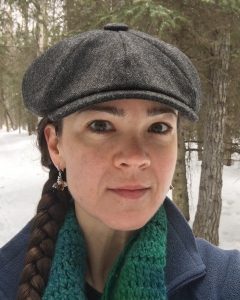Evo-Devo 2020: Case Studies in Diversity (EDIC PB20 symposium)
Every year, the Equity, Diversity and Inclusion Committee (EDIC, formerly the Minority Affairs Committee, MAC), hosts a concurrent symposium during the Plant Biology meeting. This year, the meeting was held virtually, but participants were nevertheless treated to an excellent set of talks. Stay tuned for the 2021 EDIC symposium lineup!
Here are the 2020 speakers, their titles, and their abstracts.
 Keeping Developmental Time: A Developmental Hourglass in Grass Inflorescence Development
Keeping Developmental Time: A Developmental Hourglass in Grass Inflorescence Development
Sam Leiboff, PhD,Assistant Professor, Oregon State University, Department of Botany and Plant Pathology
Assembling meaningful comparisons between species is a major limitation in studying the evolution of organismal form. To understand development in maize and sorghum, closely related species with architecturally distinct inflorescences, we collected RNA-seq profiles encompassing inflorescence body-plan specification in both species. We reconstructed molecular ontogenies from 40 B73 maize tassels and 47 BTx623 sorghum panicles and separated them into transcriptional stages. To discover new markers of inflorescence development, we used random forest machine learning to determine stage by RNA-seq. We used two descriptions of transcriptional conservation to identify hourglass-like stages during inflorescence development. Despite a relatively short 12 million years since their last common ancestor, we found maize and sorghum inflorescences are most different during their hourglass-like stages of development, following an inverse-hourglass model of development. We discuss whether agricultural selection may account for the rapid divergence signatures in these species and the observed separation of evolutionary pressure and developmental reprogramming.

 The START Domain of the Deeply-conserved and Essential HD-ZIPIII Proteins Regulates Their Transcriptional Activity by Multiple Mechanisms
The START Domain of the Deeply-conserved and Essential HD-ZIPIII Proteins Regulates Their Transcriptional Activity by Multiple Mechanisms
 The Evolution and Diversity of CAM Leaf Anatomy
The Evolution and Diversity of CAM Leaf Anatomy
Karolina Heyduk, PhD, Assistant Professor, University of Hawaiʻi at Mānoa
(No abstract)
Lightning talk: Evolution & Diversification of Plant-plant Communication: An Intermediate Hypothesis
Jordan Dowell, PhD candidate, University of Central Florida
Current hypotheses surrounding the evolution of emission and perception of volatile organic compounds (VOCs) as a communication mechanism among plants lies in their importance as internal signals. VOCs released from damaged organs induce resistance in undamaged organs of the same individual faster than vascular signaling and independent of anatomy. Earlier work shows the reduction in efficacy of VOC induced resistance as genetic and physical distance of populations increase, although the pattern of decay is not supported at the interspecies level. As evidence supports the occurrence of interspecies VOC-mediated induction, variable responses not explainable by shared evolutionary history pose a critically missing mechanism for describing the transition of the phenomenon from communication to ‘eavesdropping’. As evolutionary theory necessitates fitness consequences for ‘true communication’, it is important to disentangle chemically mediated induction events from reciprocal self-recognition (communication) among individuals from unidirectional signal interpretation (eavesdropping). Here we present several theoretical models hypothesized to lead to communication or eavesdropping, while presenting a series of experiments to disentangle this question in a phylogenetically informed manner using the annual clade of Helianthus.



